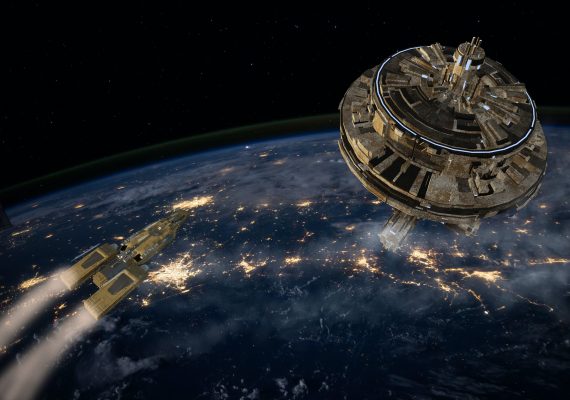CommanderImage by Torn MacAlester using OpenSim By Torn MacAlester The events in the crater weighed heavily on Nils Carmike. He nearly killed his commander, Mose. It was an accident. Though, he felt defeated as he stared out the Moon-ship window, looking at the crater where it occurred. “I need to put you on this […]
Short Story: Golf and Outgassing by Torn MacAlester
Golf and OutgassingGraphic By Shannan Albright A sixty-year-old Moon mystery prompts Colonel Annie Macturner to make a risky decision. Intrigued by an interview designed to manipulate, Milton Johnson, a candidate that conflicts with her highly distinguished military background, is selected as her crew-mate. Can Annie solve the landing site mystery and unravel Milton’s enigma before […]
Vignette: Y+1 by Torn MacAlester
Y+1by Torn MacAlester This morning on the Night Watch Live AM, we are speaking with Nick in Montana, who’s been living inside of the blast zone of Yellowstone since the explosion last year. Nick, we have a caller on line two, are you ready for questions from the audience? “Go ahead Sam,” I said, pouring […]
Short Story: Morgan’s Road by Torn MacAlester
Morgan’s Road a short story by Torn MacAlesterMorgan’s Road, a short story by Torn MacAlester Graphic by Shannan Albright Making a living on the Moon is not for everyone, but Nelson Carmike actually preferred the airless basalt plains over Earth’s windy prairies. Unfortunately, three years of Moon prospecting left him penniless, and without funds for […]
Vignette: The Soldier by Torn MacAlester
The SoldierBy Torn MacAlester Image generated by Torn MacAlester using GIMP 2.10.2 with Stable Diffusion AI add on. The Soldier Y+0 Granger realized that the whirlwind month had ended as he headed to the Greyhound bus, hoping to see if he could get a trip. According to the sergeant in the discharge barracks, his […]
Vignette: The Mountain by Torn MacAlester
The MountainBy Torn MacAlester Original Photo by Jose Vega from Pexels. Modified to grayscale and blurred using GIMP. I sighed, looking at the grey landscape, trying to estimate the direction to the cabin. I abandoned the mountain, like everyone else, when the ash fell. They didn’t expect us to get a lot, […]
Vignette: Sins of the Son by Torn MacAlester
Sins of the SonPhoto by Brett Sayles from Pexels Sins of the Son By Torn Macalester “Did you hear it?” The patient asked over the cacophony of emergency equipment as the doctor worked on him and six other patients that were nearly as bad. “Hear what?” The doctor asked, placing the gauze pads over the burns. “Make sure we […]
